Disclosure: This article contains affiliate links. We may earn a commission from purchases at no extra cost to you, which helps our travel content.
While my research typically takes me to remote mountainous regions where geology and cultural preservation intersect, I recently found myself in Chicago for a medical conference on genetic disorders—a field that has consumed much of my professional life since my husband's passing. Rather than sequestering myself in lecture halls for the entire duration, I decided to apply my analytical approach to exploring the city's renowned culinary landscape. What emerged was a fascinating study in cultural stratification, not unlike the geological formations I typically document. Chicago's food scene presents itself in distinct layers: the tourist-facing iconic dishes, the deeply authentic neighborhood establishments, and the innovative fusion concepts emerging from cultural intersections. This weekend food tour itinerary combines all three elements, providing families with a comprehensive cross-section of Chicago's gastronomic terrain.
The Science of Deep Dish: Deconstructing Chicago's Iconic Pizza
My scientific background compels me to approach even pizza with analytical precision. Chicago's deep dish is, fundamentally, a fascinating exercise in thermodynamics and structural engineering. The high-sided crust creates a containment vessel that allows for a significantly higher ratio of toppings to bread than traditional pizza styles. This architecture necessitates a reversed assembly process—cheese first, then toppings, with tomato sauce as the final protective layer to prevent burning during the extended baking time.
After testing multiple specimens across the city, I can report that Lou Malnati's offers the most consistent exemplar of the form. Their butter crust provides a structural integrity that withstands the weight of fillings while maintaining textural contrast. Pequod's presents an intriguing variation with its caramelized cheese edge, creating a delightful Maillard reaction that produces complex flavor compounds. For families with diverse preferences, Giordano's stuffed pizza represents yet another evolutionary branch worth sampling.
The deep dish experience is best approached with preparation. These are substantial creations requiring 30-45 minutes of baking time after ordering. I recommend bringing a portable travel journal to document your observations and rankings while waiting. This participatory documentation keeps children engaged in the culinary adventure and creates a memorable family record of your findings.

💡 Pro Tips
- Order your deep dish immediately upon being seated as they take 30-45 minutes to bake
- Share a large pizza between 3-4 people as portions are substantial
- Try the 'butter crust' at Lou Malnati's for the quintessential Chicago experience
Cultural Preservation Through Cuisine: Chicago's Ethnic Neighborhoods
As someone who documents indigenous cultures alongside geological formations in my usual travels, I find Chicago's ethnic neighborhoods equally worthy of thoughtful exploration. These culinary enclaves represent living cultural preservation, where food traditions maintain connections to ancestral homelands despite geographical displacement.
In Pilsen, the vibrant Mexican community has created a microcosm of regional Mexican cuisine that rivals anything I've documented in my travels through Central America. Carnitas Uruapan serves pork prepared using techniques that date back generations, while 5 Rabanitos offers a more contemporary interpretation that still honors traditional flavor profiles. The paleta shops along 18th Street provide a colorful taxonomic study of Mexican frozen treats that particularly enchants younger travelers.
Chicago's Devon Avenue presents an extraordinary phenomenon of cultural coexistence, with Indian, Pakistani, and Bangladeshi establishments existing in remarkable proximity. This allows families to observe subtle variations in spice utilization and cooking techniques across cultures with shared historical roots. Sabri Nihari's haleem (a slow-cooked lentil and meat dish) provides an excellent case study in how slow cooking transforms protein structures and releases complex flavors.
For documenting these culinary explorations, I recommend a compact camera that performs well in varied lighting conditions. Restaurant interiors often present challenging photographic environments, and this model's superior low-light performance ensures you'll capture the vibrant colors and textures of these cultural dishes accurately.

💡 Pro Tips
- Visit Pilsen on weekends when family-run establishments often feature special regional dishes
- Explore Devon Avenue between Western and California for the highest concentration of South Asian restaurants
- Ask restaurant staff about the regional origins of their specialties for deeper cultural context
Geological Formations in Pastry: Chicago's Bakery Landscape
My geological training has given me an unexpected appreciation for pastry arts, where layering techniques create structures not unlike sedimentary formations I've documented in canyons across the American Southwest. Chicago offers several exemplary locations for studying these culinary strata.
Lost Larson in Andersonville applies Scandinavian precision to laminated dough, creating cardamom buns with distinct, visible layers that separate upon contact much like properly formed shale. Their process represents a cultural preservation of techniques brought by Nordic immigrants that have evolved through generational refinement.
For families, Firecakes Donuts presents an accessible entry point to understanding how temperature manipulation affects protein structures in dough. Their old-fashioned donuts display a characteristic cratered surface created by specific thermal expansion properties during frying—a perfect teaching moment about physical transformations through heat application.
Perhaps most impressive from a structural perspective is Aya Pastry, where chef Aya Fukai creates Japanese-influenced French pastries of remarkable architectural integrity. Her croissants demonstrate perfect lamination—alternating layers of butter and dough that create distinctive honeycomb patterns when cross-sectioned.
I've found that a systematic approach yields the best results when exploring with children. Rather than overwhelming young palates with full-sized portions, implement what I call the 'quarter rule'—purchase four different items and divide each into quarters so everyone can sample without excessive consumption or waste. This approach transforms a simple bakery visit into a comparative analysis exercise that engages children's critical thinking.

💡 Pro Tips
- Visit bakeries in the morning hours when products are freshest and selection is widest
- Ask about specific baking techniques—most artisanal bakers are passionate about sharing their knowledge
- Create a rating system with children to document and compare different bakeries systematically
Chicago's Molecular Gastronomy: Where Science Meets Cuisine
While my professional research focuses on genetic structures, I maintain a fascination with all scientific applications—including the branch of food science known as molecular gastronomy. Chicago has been at the forefront of this movement, where scientific principles are deliberately applied to transform ingredients and create novel dining experiences.
Alinea remains the pinnacle of this approach, though its price point places it beyond most family dining budgets. For a more accessible experience that still demonstrates scientific culinary techniques, The Aviary offers innovative cocktails that employ principles of chemistry and physics. Their 'Science of Smoke' presentation provides an excellent visualization of how aromatic compounds affect flavor perception—a concept even younger diners can appreciate through non-alcoholic versions.
For families specifically interested in the scientific aspects of food, I recommend a visit to Pretty Cool Ice Cream, where the flash-freezing process creates unique textural properties through rapid crystallization. Owner Dana Cree applies her fine dining background to create frozen treats that demonstrate principles of emulsion and phase transition in an approachable format.
To track and compare these culinary experiments properly, I suggest using a digital food thermometer to measure serving temperatures of various dishes. This creates an additional layer of scientific observation that children find engaging while teaching principles of how temperature affects flavor perception—warmer foods release more aromatic compounds, while colder temperatures suppress certain flavor notes.

💡 Pro Tips
- Book The Aviary experiences well in advance as reservations fill quickly
- Ask servers about the scientific principles behind unusual preparations—most are well-trained to explain
- Create a simple experiment by tasting the same food at different temperatures to observe how perception changes
Navigating Chicago's Food Halls: A Study in Culinary Diversity
Food halls represent a fascinating contemporary adaptation of traditional market structures I've documented across various cultures. Chicago offers several excellent specimens that allow families to efficiently sample multiple culinary traditions within a controlled environment.
Time Out Market in Fulton Market District functions as a curated collection of Chicago's culinary innovations, with vendors selected to represent the city's diverse traditions. The second-floor observation deck provides an excellent vantage point for studying the social dynamics of communal dining spaces—a phenomenon I've observed in cultures worldwide.
For families with diverse preferences, Revival Food Hall in the Loop offers an optimal solution to the common dining dilemma where different members desire different cuisines. The spatial arrangement facilitates what anthropologists would call 'separated commensality'—the ability to eat different foods while still sharing a communal dining experience.
Most intriguing from a cultural preservation perspective is Chicago French Market, where traditional European market structures have been adapted to contemporary urban environments. The cheese counter at Pastoral provides an excellent opportunity for children to learn about bacterial cultures and aging processes in food preservation.
Navigating these spaces efficiently requires preparation. I recommend bringing a insulated water bottle for each family member, as the sensory stimulation and ambient temperature in food halls often increases thirst, and staying properly hydrated enhances taste perception. Additionally, these busy environments can become warm, and maintaining proper hydration is essential for optimal gustatory function.
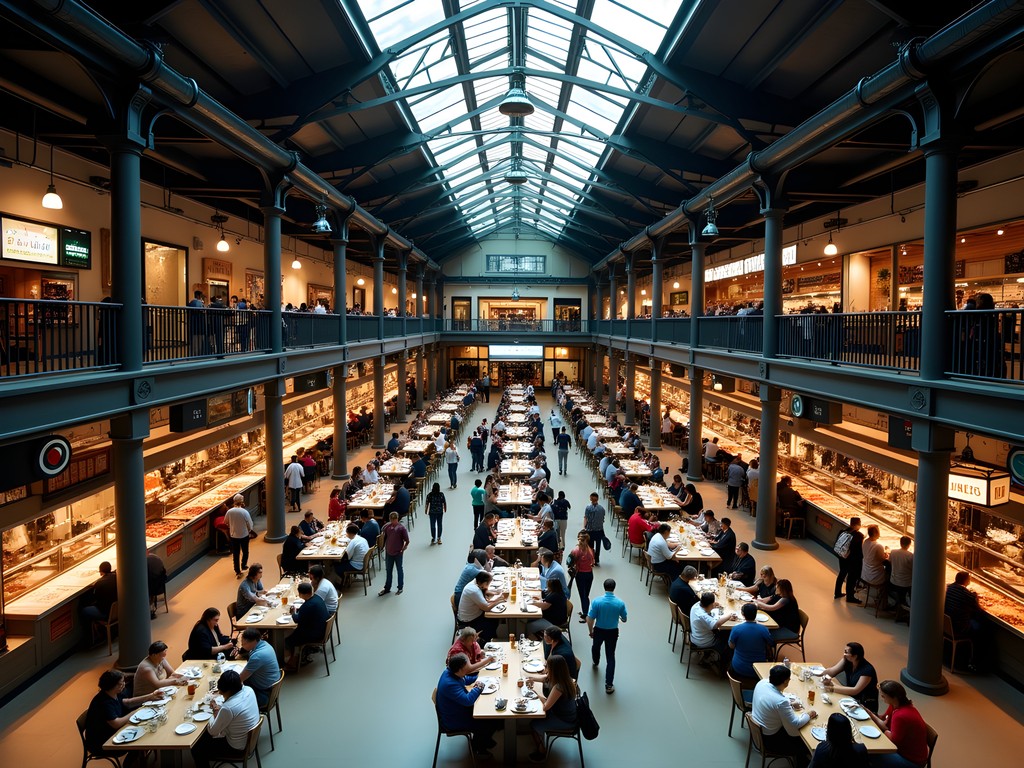
💡 Pro Tips
- Visit food halls during off-peak hours (2-4pm) to avoid crowds and have better access to vendors
- Have family members order different items and create a sharing system to maximize variety
- Use the Time Out Market app to pre-order from multiple vendors and coordinate pickup times
Final Thoughts
This culinary exploration of Chicago reveals patterns similar to those I've documented in geological formations worldwide—layers of history, cultural preservation through technique, and innovative adaptations to changing environments. The city's food landscape provides families with an accessible entry point to understanding broader concepts of cultural migration, scientific principles in cooking, and the evolution of traditions over time. As with my mountaineering expeditions, the most rewarding discoveries often come when we approach familiar territories with fresh analytical perspectives. I encourage families to document their own Chicago food explorations systematically, creating not just memories but a deeper appreciation for how culinary traditions embody cultural resilience and adaptation. The comparative study of something as seemingly simple as pizza or ice cream can open children's minds to scientific inquiry and cultural appreciation in ways that transcend the immediate sensory pleasure of eating.
✨ Key Takeaways
- Chicago's food scene represents distinct cultural strata worth exploring systematically
- Ethnic neighborhoods offer authentic culinary experiences that demonstrate cultural preservation techniques
- Applying scientific observation to food experiences creates deeper engagement for children
- Food halls provide efficient sampling of diverse cuisines while maintaining family togetherness
📋 Practical Information
Best Time to Visit
year-round, though summer offers additional outdoor dining options
Budget Estimate
$75-150 per day for food experiences for a family of four
Recommended Duration
2-3 days for comprehensive exploration
Difficulty Level
Beginner



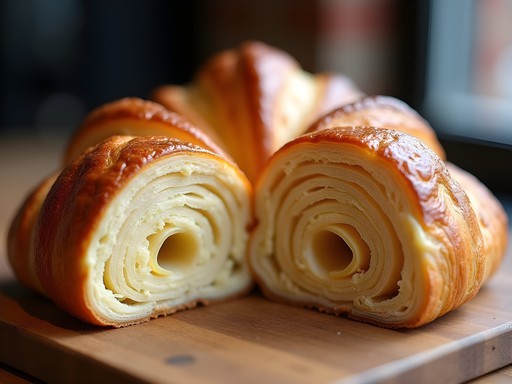

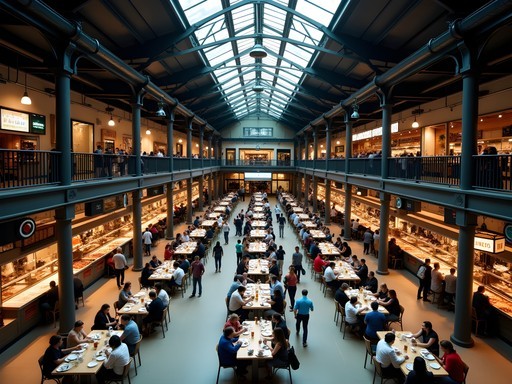


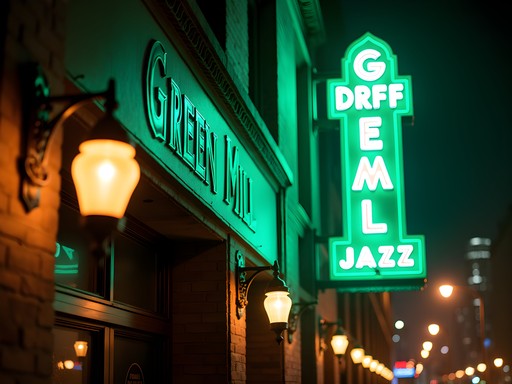




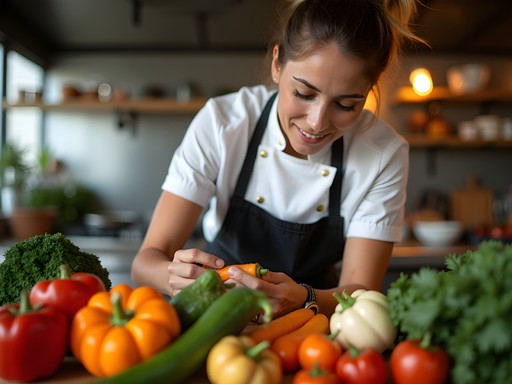

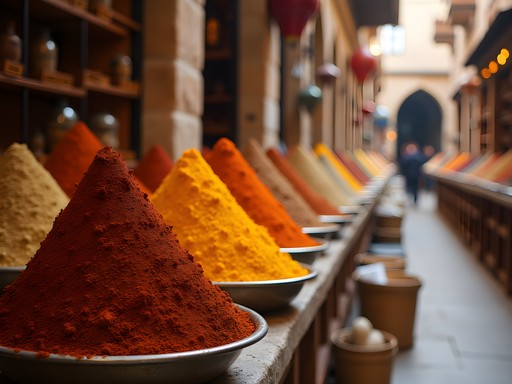
Comments
mountainlife
Great post! For anyone planning a Chicago food tour, I highly recommend getting a 3-day CTA pass to navigate between neighborhoods. We used public transit to hit Devon Avenue (Indian), Argyle Street (Vietnamese), Pilsen (Mexican) and Greektown all in one weekend! Saved money on rideshares and got to see more of the city. I tracked everything in my food journal which helped me remember all the amazing places we tried.
wanderphotographer
Smart tip about the CTA pass! We walked so much between food stops and it definitely helped balance out all those calories 😂
wildnomad
Those bakery photos have me drooling! Booking my flight to Chicago right now!
Jean Wells
Abigail, your interdisciplinary approach to culinary exploration is refreshing. The parallel between geological stratification and Chicago's deep dish is brilliantly observed. During my research visits to Chicago, I've noted similar patterns in how immigrant communities have created distinct culinary microclimates throughout the city's neighborhoods. Your scientific lens reminds me of the work being done at Alinea, where the molecular gastronomy approaches food as both art and science. Did you find that the preservation of culinary traditions in ethnic neighborhoods followed similar patterns to cultural preservation in your mountainous research regions? I've documented similar resilience mechanisms in isolated communities worldwide.
hikingmaster
Heading to Chicago next month for the first time! Which neighborhood would you recommend for someone who loves both good food AND architecture?
Jean Wells
Not the author, but I'd suggest the West Loop. The restaurant scene is exceptional (try Fulton Market), and the industrial architecture transformation is fascinating. Take the Chicago Architecture Foundation's river cruise too - it provides excellent context for the city's structural evolution while you can plan your dining adventures.
hikingmaster
Thanks Jean! Adding West Loop and that cruise to my itinerary!
wanderphotographer
I love how you connected geology to Chicago's food scene! I was just there last month and did a self-guided pizza tour comparing three deep dish spots (Lou Malnati's, Giordano's, and Pequod's). The 'layers' really are like geological formations when you think about it! Did you find any spots in Pilsen that you'd recommend specifically? The Mexican food scene there was incredible but I feel like I only scratched the surface.
wildnomad
Pequod's caramelized crust is LIFE-CHANGING. Did you try it?
wanderphotographer
YES! That crust was my favorite part - like a geological formation of deliciousness lol
Casey Andersson
Abigail, your scientific approach to food exploration is refreshing! I visited Chicago last winter and was blown away by the culinary diversity. The ethnic neighborhoods were the highlight - I spent a whole day in Pilsen enjoying Mexican cuisine that rivaled what I've had in Mexico City. I'd also recommend visitors check out Argyle Street for Vietnamese food that transported me straight back to Hanoi. Did you get a chance to explore any of the speakeasy bars? I discovered this hidden gem called The Drifter where the cocktail menu comes printed on tarot cards. Perfectly paired with my pocket food guide for finding those off-the-beaten-path spots between meals!
redlife
Ooh, that speakeasy sounds awesome! Adding The Drifter to my list too. Did you need reservations?
Casey Andersson
It's first-come-first-served, but I'd recommend going on a weekday if possible. Weekends get packed! And the tarot card menu changes daily, which makes it extra fun.
redlife
Love how you connected your geology background to food layers! Which deep dish place would you recommend for a first-timer? Going to Chicago next month and pizza is top of my list!
Casey Andersson
Not the author but I'd recommend Lou Malnati's for your first deep dish experience! The butter crust is incredible. Pequod's is also amazing if you like caramelized cheese edges!
redlife
Thanks Casey! Added both to my list. Any thoughts on Giordano's? My cousin keeps telling me to go there.
Casey Andersson
Giordano's is good too! More of a stuffed pizza than traditional deep dish. Very cheese-heavy. Can't really go wrong with any of them honestly!
MidwestExplorer
Really cool post! Love the connection between geology and food layers!
TravelWithKids_Sam
We just got back from Chicago with our kids (9 and 11) and your post would have been so helpful! The molecular gastronomy section reminded me of our experience at Alinea - we splurged for one night without the kids and it was WORTH IT. The edible balloon was mind-blowing! For families, I'd add that the food halls like Time Out Market were perfect for our picky eaters. Everyone could get something different. And don't miss the Italian beef sandwiches - my kids are still talking about them. The science and food connection in this post is such a great angle!
freepro3733
Just got back from Chicago and tried that molecular gastronomy place you mentioned!! My mind was BLOWN!! The edible balloon was like eating a science experiment but SO GOOD!! Your geology background gives such a cool perspective on food!! 🍕🔬
Venture X
Premium card with 2X miles, $300 travel credit, Priority Pass